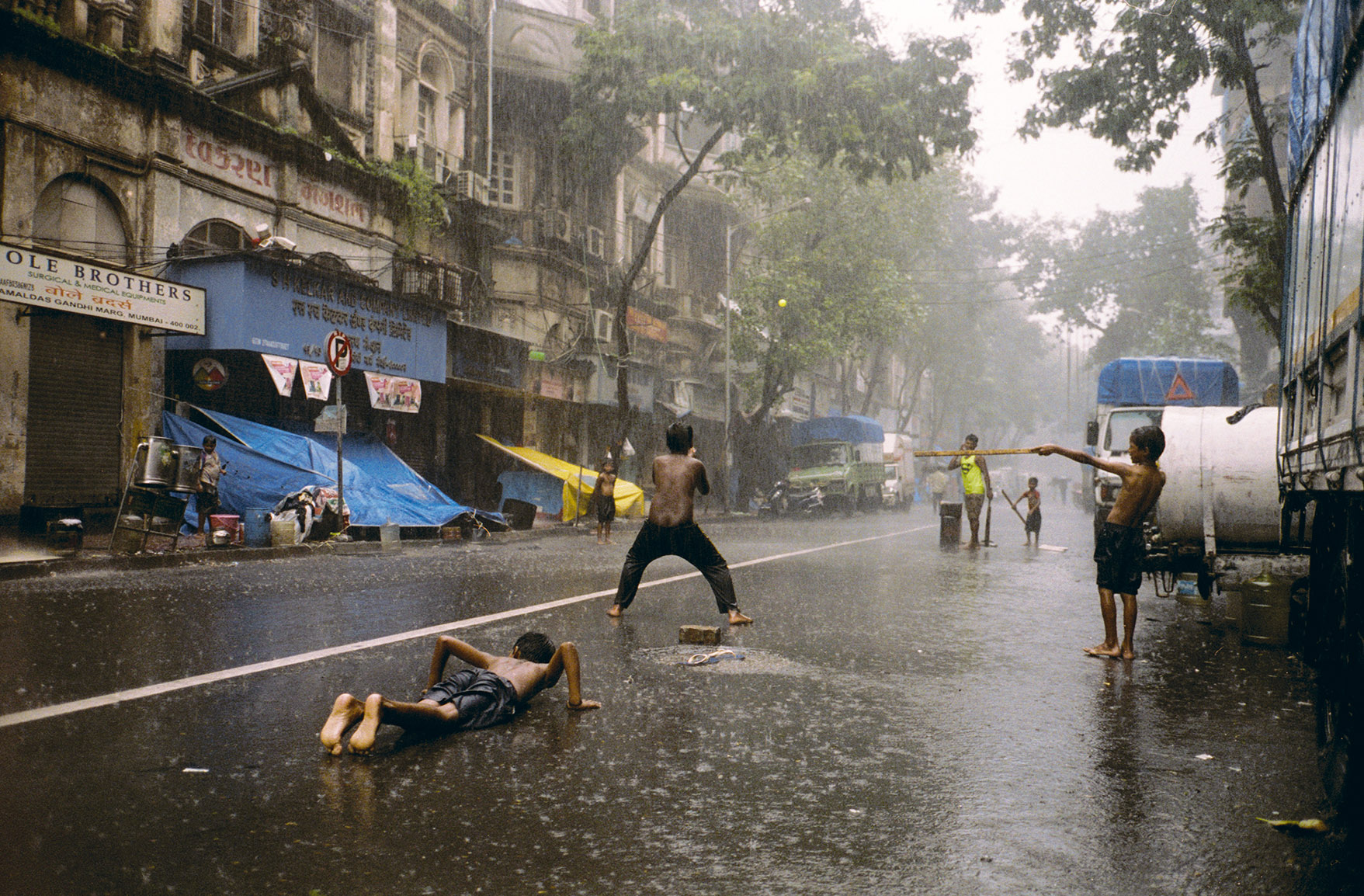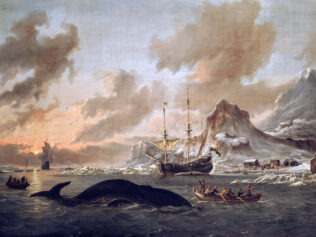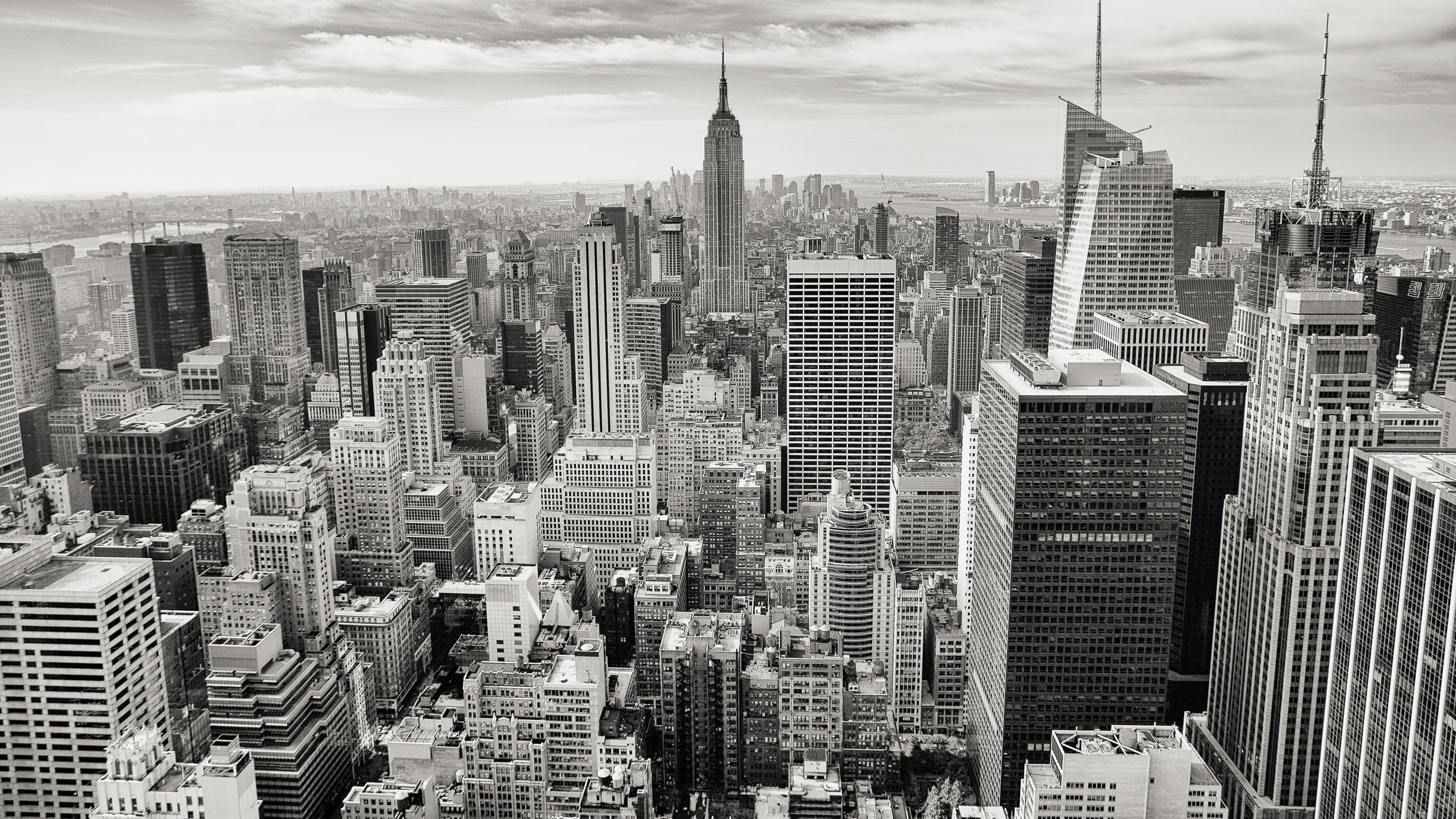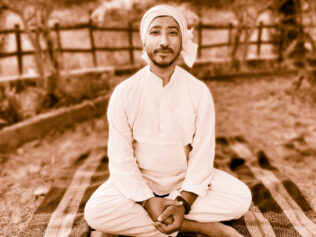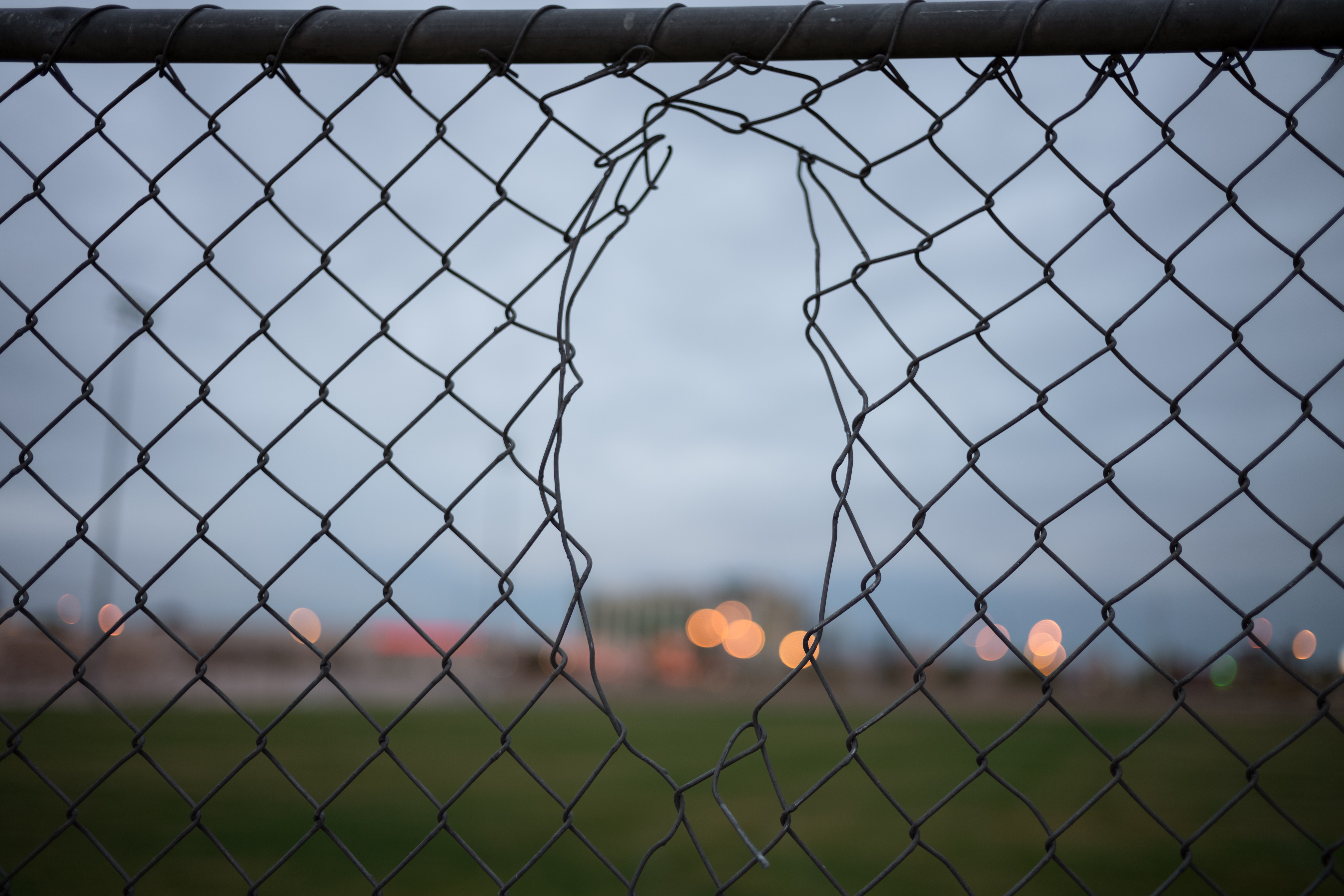
Before the monsoon downpours begin to fall, mildew appears – the omnipresent sister of dampness that invades every corner. It heralds long months during which the gods flood humans with rain. In India, the season of abundance coincides with the time of juicy mangoes and great fear. Water will decide everything.
It’s still dark, an hour before dawn. The night, dense with countryside blackness, will start thinning around 6am. There will be no sunrise, just an uneventful transition from the darkness into murky grey daylight. The night will retreat without notice, rushed out with the first cups of tea so hot they burn hasty lips, chased away with street vendors’ shouts, muezzin calls. It will be dispelled by the tinkling bells of the morning puja prayer rituals with their incense, garlands and little flames, performed in corner shops and on street markets. It will be gone just before the first customers bless the day’s business with their presence.
All this will come eventually, but not just yet. Now, the bullocks are marching through the wet darkness. They are white, with stocky humps and horns as long as swords. They walk in the middle of the road, jingling their bells, pulling two-wheeled wooden carts. On each cart, the driver is crouching, huddled up in a shawl to shield himsealf from heavy raindrops and from the cold crawling down from the mountains. There are more passengers on those carts: skinny and small-bodied; limp, fast asleep with cracked heels tucked up close to their thighs. Every cart carries a wooden plough, fastened with a piece of rope or weighted down with heavy sacks. They drive slowly along the way that took them here from Hospet, the city in Karnataka district in India. They are not coming together, but merely all at the same time, which makes the carts look like a sweeping procession clambering toward the rice fields covered with water and the crisp green mist of seedlings. The colour is so young and bright it seems to glow when the first rays of sunrise lick fresh new leaves.
The closer they get to the river, the shorter the column becomes. One by one, the carts turn right and left into the narrow embankments that divide the fields. The bullocks slow down obediently. They leave the asphalt track and walk onto soggy paths poking out of pools of water sprinkled thickly with young green rice saplings. From dawn till dusk – that’s how long these men and beasts will work. They will spend their day wading in water that’s almost knee-high, finding their way across sheets of heavy rain. The men will protect their heads from the rain with ripped burlap sacks that used to carry flour or onion. They will pull their cotton lungis up to their knees, giving the rain nothing but their lean, muscular shins. Women will wrap their colourful saris tightly around their hips and bend their bodies low. They will spend long hours in this forward fold, carrying rice saplings across the field one after another, their backs whipped with heavy raindrops.
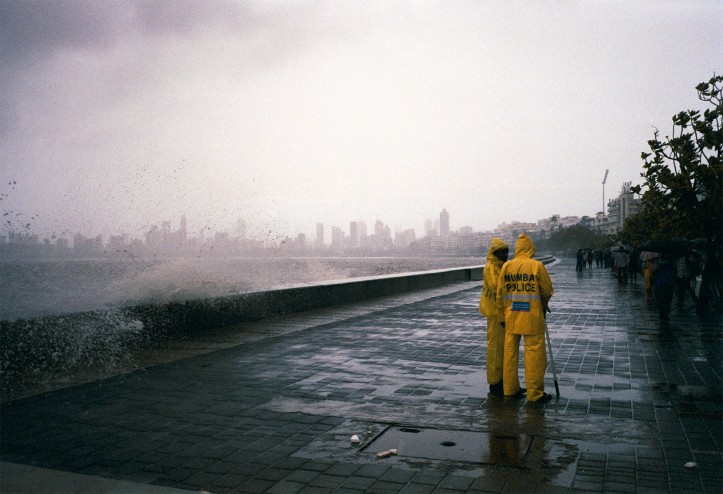
The animals will walk across the murky waters, slashed with fresh water coming from the clouds and carried by gusts of rain. They will walk unhurriedly, their heavy lids half-closed, across the plough-ripped mud. The rain will pass, but before their skin dries, another downpour will come. And so it will go on and on for the next four months, from June to September. During that time, everyday life is controlled by monsoons.
Rivers flowing from the skies
In early Hindu mythology, rain was represented by Indra – the most important of all gods, the dispenser of storms. Brave and militant, Indra would use a lightning bolt as a weapon. He fought Asuras, negative anti-deities, and defeated the dragon named Vritra – a demon of drought; guilty of holding back the rains and hiding the sun high in the sky. Indra’s strength came from consuming a potion called soma. He was accompanied by Rudras, who rode the clouds and unleashed storms. Indra is an omnipresent deity: one of his names is the Thousand-Eyed God.
Thousands of raindrops fall with no prelude and with no mercy. There is no foreplay, no cautionary drizzle, no chance to find shelter. Just a few drops in, heavy masses of water cascade down in massive deluges. As if Indra was pouring down whole pitchers at once; as if the long dreadlocks of Shiva were dripping with all the waters of the mythical Ganges river. This sudden violence of rainfall forces the language to adapt to circumstances. That’s why the Indians say the monsoon is ‘breaking’.
The warning is there, hanging in the air. Masses of air are carried by wind from the oceans in the south-east. They crawl upwards, to the north of India. They meet swathes of overheated land. In the spring, the subcontinent heats up quickly as the Himalayas protect it from the cool air of the northern hemisphere. In April, the heat becomes unbearable. It’s too hot to work, to trade, to think. Heads drop as if weighted down by some magic spell. Buses and trains carry millions of spaced-out people, office desks turn into makeshift beds. There’s no chance to get anything done; everyone’s lethargic. Long before noon, merchants cover fruit and vegetables on their stalls with burlap sacks, so the produce doesn’t wilt from the heat. Vendors sleep heavily next to their goods, unconscious from the heat. They only come to before dusk, alerted by the bright lights of naked bulbs. The dusk, however, brings little relief: before the monsoons, the evening air thickens. It’s so hot and humid even the mosquitoes are dazed. They fly slowly and bite lazily.
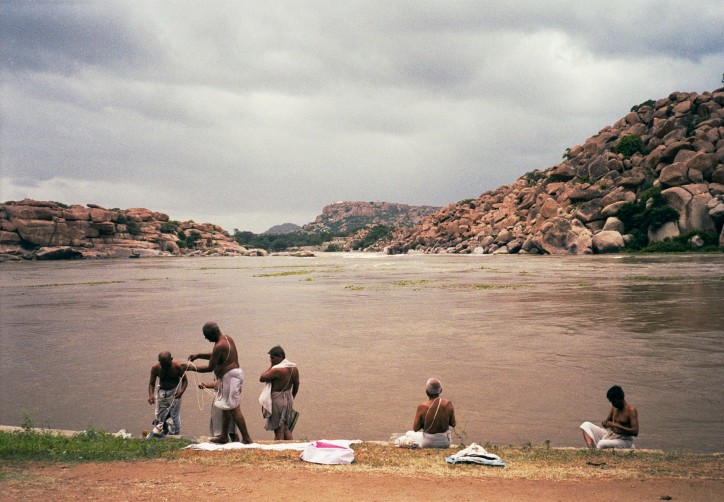
The wait for the monsoon is punctuated with clouded gazes, sluggish movements, constant wiping of the sweat from heavy eyelids with small towels. Where’s the rain? How long must we wait? Endless humidity, increasing day by day. The heat makes the tension grow, and yet the wet fug numbs the senses and sucks the energy out of every muscle. The whole country drags itself along half-consciously, hallucinating.
Mildew blankets all matter with its white filter like a fine mist. It crawls up tablecloths, worms its way inside account books and clothes. Everything must be cleaned daily: wiped, aired, dusted, washed and brought out into the sun, while the sun lasts. One must stay alert at all times: in the monsoon prelude, musty smells intensify. They beckon the days when hundreds of booksellers from College Street in Kolkata will see millions of their books ripple and fold, their freshly crinkled pages marred with tiny dark-brown pockmarks of rot that will soon grow into large stains, blotting away printed words forever. This gelatinous harbinger of rain is no less important than the deluge itself. If not for this unbearable humidity, the first rain would never be considered salvation. It’s greeted with joy and relief. An explosion of hope, a celebration of life.
Bathing in the clouds
The hotter the land, the fuller the monsoon will form: cool masses of air coming from over the ocean will hit the subcontinent, making a short stop in the Western Ghats – it is the first mountainous barrier awaiting the air just several dozen miles from the shore. The Western Ghats run along the shore, from Maharashtra to Kerala, and are also known as the Benevolent Mountains. The air, brought there by the monsoon winds, will billow by the slopes until the pressure pushes it upwards. Finally, the clouds will roll over the mountaintops. Soon, they will retaliate with harsh, ferocious rain. What a beautiful revenge, to cover the mountains with a bright green blanket of grass and jungle.
We arrive by quarter past two in the morning. We have left Mumbai behind – this vibrating, gluttonous city, growing forever upwards just like Manhattan a century ago; poking the sky with the skeletons of inhumanly tall high-rise superstructures. The car is crawling along the serpentine road, covered not with fog but with a cloud. From here, the sky is closer than the ground.
The car lights catch the silhouette of the concrete wall that separates us from the abyss below. We try to stick to this murky grey line. On the parking lot before Matheran, we meet a guard. He’s fast asleep, wrapped in his raincoat on a hard chair, with his head resting on a torch. We say our hellos. We’re all covered in wet mist, even though it’s not raining right now. We get on our way.
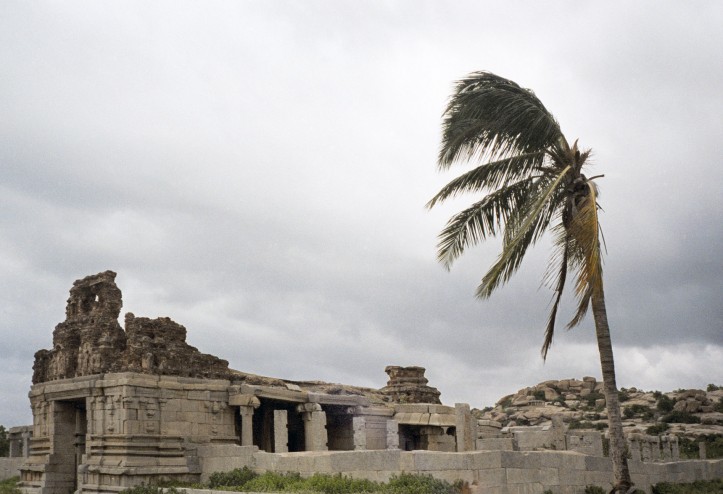
Our shoes slip on the rocks covered with rusty mud. We carefully step over the tracks of the narrow-gauge railway built here with the money of Adamji Peerbhoy – a Shiite businessman and generous charity donor. As a child, Peerbhoy made a living as a tea vendor, running back and forth with teacups. He passed away a known philanthropist and respected political leader of the Indian Muslims. His son, Abdul Hussein Peerbhoy, lived in Matheran until the 1960s – it was him who oversaw the railway construction process. The first carriages left Neral and went all the way to the mountaintop in 1907. They function to this day, regularly covering the 13-mile route with 281 turns and bends along the way, pulled by a steam engine.
We walk through the night. Now, just before the dawn, the darkness is the thickest. Our steps and voices awaken monkeys, dogs and cows sleeping in the only street of the health resort. We keep walking ahead, to the jungle again. We trundle the paths covered with runny mud until we reach the house that once belonged to Peerbhoy junior. During the rainy season, almost nobody comes here to rent the rooms, but the waiter and the chef will come over in the morning to serve us breakfast. The guard takes off the lock from our room’s door. Inside, there is a 150-year-old bed, a few armchairs covered with soft upholstery, and a desk complete with a blackened mirror. Someone has left us a bottle of water, a bowl of nuts dusted with masala, and a vacuum flask filled with coffee. Click – the fan begins to slowly mill the rotten air, spreading the strong, cloying smell of stale mould across the room.
At 5am the rain comes. It doesn’t fall, it simply appears everywhere at once. It’s in the cloud just above our heads, in the trees outside the veranda, on the stone tables in front of the house, on us. It is heavy, monotonous, deafening.
A few hours later, I wake myself up by pouring ice-cold water from a copper jug onto my head and the back of my neck. The cold is paralysing at first, but it quickly sobers me up and throws me straight into life. Outside, it’s bright, wet and warm. We take in the view of mountainsides that stretches from the paths leading across the mountaintops. The trails are steep, but from where we stand they seem smooth and gentle, nestled in sheets of fresh green foliage like in a piece of an intricately weaved sari. In the distance, we can see a large lake – a glint of clear surface among the mountaintops that runs further and further, until they disappear in the fresh waters of Kerala 1000 miles away from here, in the far south end of the subcontinent. We cannot hear anything other than the hum and hiss of water. Streams flow in countless waterfalls down the rocks, until the wind blows them away in gushes of snow-white mist, carrying water droplets along the mountainsides.
Too wet, too dry
The rains last the longest in the mountains. They soak the plantations of tea, pepper and cinnamon in Kerala, dampen elephant backs and monkey heads in the jungles of Tamil Nadu, fill up the rivers of Karnataka.
The Mandovi River that flows across the expansive Deccan Plateau arrives in the Western Ghats at the latitude of Goa. There, swelled by rain, it suddenly drops 600 metres down in the violent water mass of the Dudhsagar Falls. Its name literally means The Sea of Milk in the Konkani language. And it does look just like a mass of foamy, steaming milk, when the train that carries me from the coast into the depths of the subcontinent carefully rolls towards the waterfall along the massive mountainsides.
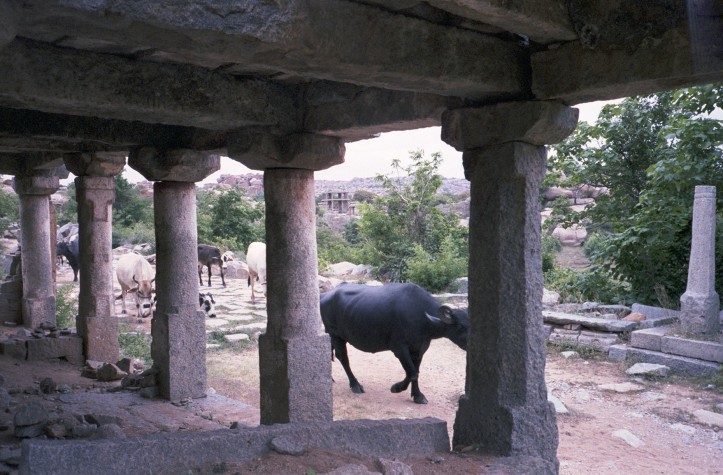
The formation, consisting of 26 carriages, is only an express by name. Right now, it travels no faster than 12mph, moving on a large, sweeping curve. The track is nestled right next to a mountain wall that’s covered with a thick tangle of the jungle foliage. And there is water everywhere: dripping from the leaves, twirling in wet spirals of droplets carried by the wind, spreading in the air in a fine drizzle. Warm steam lies on the mountaintops and falls down into valleys, floats about the hills like wisps of pale smoke, painting zigzags toward the gunmetal sky. When the cast iron railcars slide into the middle of Dudhsagar, falling sheets of water spray us through the open doors and windows. Water rushes just under the train bridge. We only have a few moments to take it all in. Soon, the view will once again be swallowed by the fog and the tangle of trees. Indian passengers greet the sight with a symphony of delighted shrieks, whistles and cheerful yelps. The waterfall is beautiful and triumphant. It deserves a round of applause!
From early June all the way to September, the constant probability of rain covers the skies with a thick dark curtain. The clouds form an impenetrable shield, cutting off the sun with no mercy.
Monsoons have their better and worse years. Wetter and drier decades bring relief to some parts of the country and suffering to others. Not enough rain means hopeless hunger. Too much will bring death and destruction.
“Back home, it’s not raining at all,” sighs a chubby boy who boarded the train in Kolkata, at the Bay of Bengal, 38 hours ago. In four hours, he will take off at the Arabian Sea. He survived two nights in a sleeping car and four meals brought in by vendors during stops at the stations. He’s wearing a rumpled T-shirt and shorts. We’re surrounded by sweaty faces, tired bodies, trash-covered corridors, now soaked with Dudhsagar waters. “In West Bengal, all farming work has stopped completely,” he adds, drawing a flat, dead line in the air with his open palms. I listen to him, and his seven friends are listening too. They are all travelling to Goa together to work in a hotel – the job is already sorted. Just before we reach the Margao station, they all disappear in dirty, reeking toilets. After a few moments, they emerge, one after the other, miraculously transformed, all dressed in shirts and drenched with cologne, like some minor gods. They will stay on the coast for six months. Their home region of West Bengal is the pantry of all India; the most important provider of rice. Too little rain in that area is bad news for everyone.
That, however, is not the only bad news this year. “You’re lucky, it’s the first day like this,” says Raj, poking at the bright sky with his finger. The pavements and roads in Alappuzha are damp even though not a drop has fallen since the morning. It’s a sunny day. Raj frowns and continues, using the language of the ministry reports: “Kerala has received forty-five days of uninterrupted rainfall. Day and night, night and day. So many floods and casualties… Our minister of state has announced this to be the greatest tragedy in more than a dozen years. And yet, the central government won’t give us a penny!” He’s angry, but not surprised. For the past four years, India has been governed by a right-wing party, and for the past six decades, the free elections in Kerala are consistently won by Marxists. It’s the longest-lasting communist government in the world that is not a dictatorship.
I’m standing with Raj over the canal in Alappuzha. The town is known for being home to the backwaters of Kerala: large basins of freshwater, constantly battling the salty currents of the Indian Ocean.
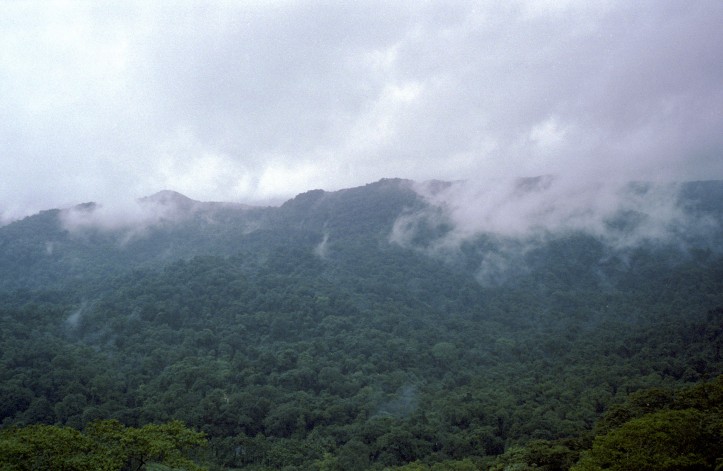
We’re waiting for the bus. I’m all dirty and dishevelled after a whole day on a boat, but Raj is neat and smooth, all freshly pressed and ironed. He’s the manager of a clothing company and a walking advertisement for his profession. He lives in Kottayam, which can be reached by ferry after a few hours’ journey, during which the boat stops at countless tiny villages built upon embankments that separate backwaters from rice fields. There’s so little space there that a fat cow can’t turn back on itself – it has to walk all the way to the crossing, where two stone-enforced roads meet. Houses and temples are so tiny that they can hardly squeeze in six women and a small figure of Holy Mary – the Virgin statue is painted in bright colours, with garlands draped on her like on a Hindu goddess. Despite the monsoon season, the people who live on this great plane of water are safe. “Rainwater has enough space to flow here,” adds Raj, waving his hand in the air. “It goes to the ocean. But deep inside the land, the water from rainfalls doesn’t have enough time to flow away, and the earth won’t soak it all up. It’ll drown us.”
The speed and abundance of the rainfall are the greatest challenges. The monsoon season isn’t even halfway there, and Kottayam has already suffered several dozen casualties and countless problems: houses being washed away, walls ripped off by gushing waters, collapsed roads, drowned schools. Whole villages are trapped on tiny patches of land. They need deliveries of freshwater, food, and medicine; people need to be transported to temporary camps. Rotting puddles of standing water are a breeding ground for mosquitoes that carry dengue, a haemorrhagic fever that knows no mercy. The rains are closely followed by a foreboding risk of epidemic.
Two weeks after my departure, a tragedy will strike. Kerala will be hit with the heaviest rains of the century. The army, helicopters and fishermen will rush to help. Over 400 people will die, and more than 700,000 will lose their homes.
Too dry or too wet. One way or another, the storms open the season of taking stock of gains and losses. The rain is the axis of India’s economic calendar – this is, after all, the most populous democracy in the world. In those 700,000 villages, the land is still owned by the people, not by large corporations. Everyone is harvesting or starving at their own expense. There is not one common monsoon or one common balance. There are as many rain seasons as there are people in this country.
The gluttonous river
It’s a grey day in Hospet, a city in Karnataka – the region known for its production of rice and bananas. The last bullock carts get on the bridge, passing by a street vendor, roasting young corn cobs on coconut shell charcoal. Both visitors and locals stop in their tracks to look at Tungabhadra. The river flows beneath us, spreading with aristocratic flair. Its time has come. Come autumn, it will shrink back to a narrow stream. But now, the river takes it all.
Its miles-wide basin was not enough; the river has swallowed rocky hillsides, bushes and trees. Only the tallest branches stick out above the surface now, green bubbles of exuberant frizz. From here, the mass of moving water looks calm and mild, almost like a lazy puddle. The landscape provides enough space for the river not to rave, but just a few miles up, most of the flood locks on the dam in Hospet had to be opened – the water has risen faster and in larger quantities than usual. A similar situation is now taking place at hundreds of dams in the south of the country. The river is falling down the concrete chutes with a mighty roar. It’s foaming and churning as if this frightening spectacle could punish the humans for trying to harness the forces of nature. It’s showing us what it can do. Reminding us of its untameable power.
The headwater of Tungabhadra springs from the hills of the Western Ghats. It flows down, swelled by rainfall. After crossing the barrier, the water calms down again and glides in a slow, wide stream for thousands of miles, across Karnataka and Andhra Pradesh, where it joins the Krishna River that flows down to the Bay of Bengal on the other side of the subcontinent. Green rice fields, banana plantations and sugar cane fields run along on both sides of the river. As long as there is water, there will be life.
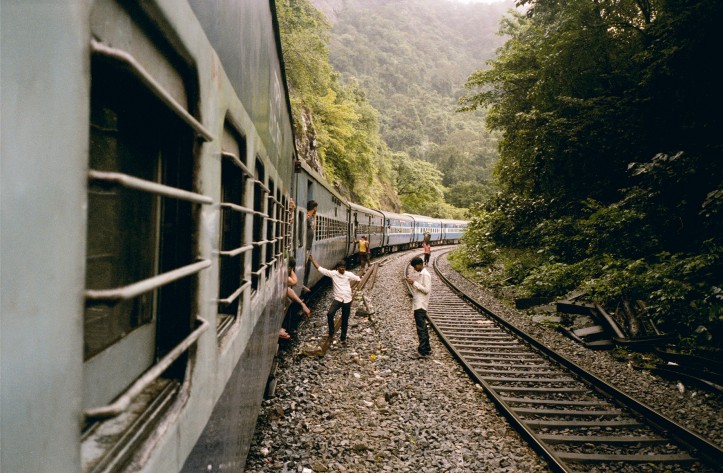
I notice three bald heads, spinning on the waves in something that looks like a flat round basket. The old men sitting inside look around hesitantly, as if taking in the view – Tungabhadra meanders in spectacular serpentine turns and twists between rocks and palm trees – but I can see them looking anxiously towards us, standing on the shore that’s getting smaller and smaller.
Those small round boats, weaved with banana leaves and waterproofed with tar, are useful for fishing or for crossing the river independently. Today though, the currents are strong. The young oarsman is trying to navigate the waves, but he doesn’t seem too confident that he’ll be able to carry his elderly passengers to the stairs leading to a small temple just off the shore. Finally, after 15 minutes of fighting the currents, they arrive at their destination. The Brahmins take off, clearly relieved, clutching their white cotton robes covering them from the waist down.
Their friends, also priests, are already there. For the past hour, they have been busy with the ritual bath. The men are standing in the river waist-deep, squatting, splashing water onto their bodies, washing their mouths, gurgling and spitting. They recite holy verses while chatting, sputtering and joking. Their movements show no rush, but no excess either – all men execute each gesture with care and in similar order. Hinduism is not a religion of holy scriptures and doctrines, it’s a civilization of everyday actions and practices. Daily ablutions and prayer are subject to unspoken synchronicity. Before noon, all Brahmins will already stand on the shore, their drying chests naked except for the sacred thread, holding copper ablution cups in their hands. Apart from that, they have nothing on themselves: no possessions, no clothes, no shoes. They slowly walk away towards the main temple, situated half a mile up the river, crossing the rocks to get to the gravel road, worn down by the wheels of buses that carry the pilgrims.
We’re several miles west from Hospet, in Hampi (that’s how the locals call this place, even though its official name is Vijayanagara, which means the City of Victory). The city is completely desolate, and that’s precisely what makes it so enchanting. Several dozen temples and buildings – erected 500 years ago – were supposed to herald a perfect, futuristic civilization, like a stone-cast confirmation of Hindu domination in a region increasingly permeated by the followers of Islam. Vijayanagara was also the second largest medieval city (after Beijing) and the richest city in India. However, it was quickly devoured by the political reality, and a coalition of Muslim leaders soon turned it into dust and bones. The ruins are scattered along Tungabhadra and the mountains surrounding it. Those constructions – many of which are still-functioning temples – are one of the most beautiful sights in this vast country.
During the monsoon season, Hampi is deserted. Heavy rain clouds in the sky scare away pilgrims and tourists, while vicious winds make it difficult to climb up to tiny temples nestled among the rocks. This raw emptiness makes it easy to lose oneself to the magnetic beauty of Hampi’s landscape.
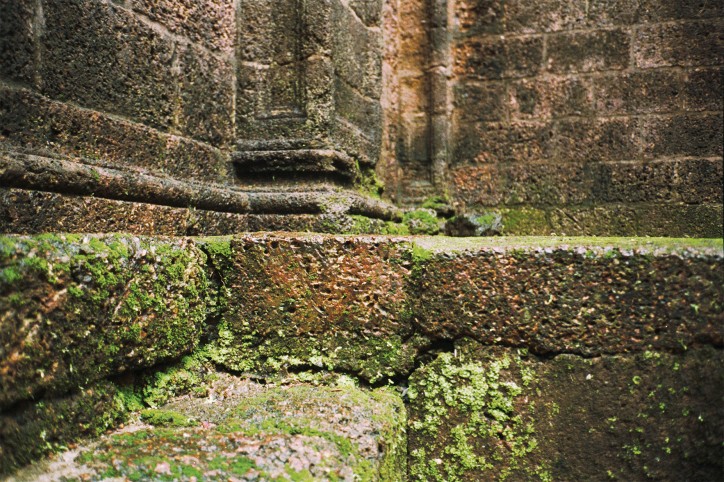
The wind just brought more clouds and it’s drizzling again. You can’t really say it started to rain, because this is happening throughout the day. Moisture is always hanging in the air, and sometimes it just increases and turns into proper rain. The weather is consequently wet, which makes it easier to accept its dominance with humility. Streams of water cover the columns, stone statues, and carts. I watch the reliefs darken, raindrops soaking the face of Hanuman – the noble and brave hero of Ramayana; the god known for his monkey face and monkey-like deftness. The Karnataka mountains look like a sophisticated puzzle of ovoid rocks, assembled by some giant mythical artist. And they are a monkey empire. The monkeys stole my breakfast straight from the plate and tried to nick my camera. There are dozens of them sitting on telephone lines, roofs, and vendor booths. They squeeze their hands into car windows left ajar and crack open stolen watermelons to scoop out the sweet flesh. They crouch on the edges of tall rocks and take in the view – just like we do – hypnotized by the wondrous spectacle of water, stone and wind in front of us.
Phantoms of brilliance
During the rain season, something extraordinary happens to colours. Some of them disappear almost completely – as if switched off by the clouds blocking the sunshine – while others seem to become more vibrant, bringing back some balance. It happens because the light refracts differently when it filters through the clouds, but also thanks to the water that brings nature back to life. Everything is in bloom and abundant with fresh leaves. The iron-rich soil by the Western Ghats now reddens – the wetter it gets, the redder it becomes. The rocks are beige for most of the year, but now they glint and shimmer with a chocolate-like glaze. This phosphorescent brilliance of colour is just a mirage cast by rain, a kind of monsoon negative. The less light there is, the more vibrant this real-life photographic film seems to be.
However, the rain can also steal colours from the world. The waters of the Indian Ocean become grey and swollen. The sands of Goa beaches darken and blacken. The whole exotic façade vanishes; it becomes washed-out and pale.
In the afternoon, Benaulim – one of the biggest beaches in Goa – is deserted. Everything is foggy and uncertain as if it evaporated, leaving us with nothing but outlines of their former shapes. The only people in sight are some soldiers doing their training. And there are dogs. All of them nearly identical, like millions of children that came from one prehistoric mother. The dogs lie curled up in shallow burrows they dug in the sand. They tilt their heads to the side, look at the ocean, doze off. Every now and again, one of them jumps up and starts howling at the waves, awakening the rest. Soon, 40 canine throats are singing along, as if they have something of great importance to say to the sea.
The water is slowly crawling towards the land. High tide is coming, and so the lone lifeguard begins his walk along the shore to move red flags on the sticks closer to the sand dunes. Swimming is forbidden, and so is taking the boats to the sea for fishing. Monsoon is not only the time of violent waves and capricious winds, but also the time of spawning season when fry must be protected. The menus in those few bars and restaurants that didn’t close after the first rains are full of unattainable dishes. The famous king fish is not on the menu, neither is crab nor prawns. Not much of a loss, really – eating fish and seafood during monsoon season might result in poisoning. Bacteria breed fast, the water and air are ‘putrid’ (that’s what the British said when dying of dysentery), and the human body slows down all its processes, commencing the tropical equivalent of winter hibernation. Precautious Indian cooks serve light dishes, boiled or stewed; no frying, no hot spices. The rain makes staying alive difficult enough even without the extra effort that comes with digesting food!
The waves of fury
At the southernmost end of Goa, in Palolem, I’ve observed some disobedience. A group of 10 men began to push a wooden boat toward the sea. They were putting heavy bales covered with grease in front of it, letting the hulk slide effortlessly ahead. Before getting the boat out, they prepared their fishing nets, spreading and connecting them, working deftly with a large awl. The current carried their boat out of the rocky bay. Only then did they start the engine and quickly disappear behind one of the millions of sullen waves.
I look at the old fisherman who remained on the beach. He sends me an apologetic smile. “Fishing is not allowed. But we still need to eat,” he says, and looks at the ocean again.
Monsoon makes beauty more difficult to come by. Palolem, so picturesque during the dry season, now looks like debris left behind after a tourist spectacle. Vendor booths and bamboo huts standing along the beach are tightly wrapped in blue plastic and tied up carefully. Rugged, rotting palm leaves cover the ground. There’s a stone courtyard nearby – probably a terrace of some closed-down café – now occupied by cows. The ocean is spitting out its dirty secrets: pieces of foil, car tires, bottles, pieces of glass and solitary chappals (the most popular type of shoe in India, rubber flip-flops produced in millions that tend to get lost by their owners in mysterious circumstances).
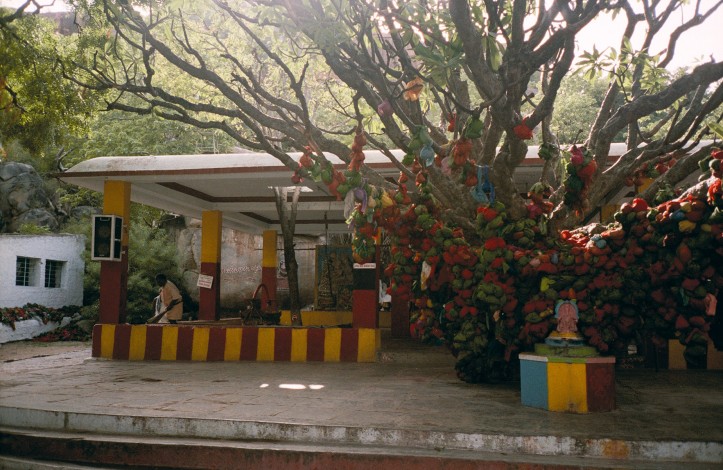
Even looking at the ocean at this time of year takes some courage, not to mention sailing it. The view is more than unsettling. The waves are furious. Grey murky waters churn angrily. They no longer try to charm anyone with shades of azure; they promise no respite. There is no audience here any more, so the ocean no longer needs to keep up the pretence of niceness. It’s accompanied by heavy rainfall. I stand in the grey sheets of warm water. I’m getting wet, and so are dog backs, wind-torn manes of palm trees, and the sand that won’t get white and dry until the autumn comes.
Only one thing stands out from this woeful vastness of grey: the dark-red tangle of a fishing net left on the sand. It lies there like a crimson spectre washed up from the sea. There’s a line of small buoys attached to it, all faded green and pale orange. On top of the net lies an oar like a giant brooch. It was left there to make sure the net wouldn’t get carried away by the wind. The wood is soaked with water, so much that it’s almost black.
Grey leaden masses
The season of dramatic headlines is on. The first few pages of the newspapers – published in several dozen languages everywhere from the Himalayas to Kanyakumari cape – are occupied by photographic evidence of catastrophes, accompanied by numbers, in an effort to measure the tragedies. There are pictures of buses covered with water, broken down bridges, eroded roads, deep crevices in the ground swallowing houses, and mud avalanches that crush entire villages. On the day of my arrival, a record-high tide washed up 10 tons of rubbish on Marine Drive, the representative promenade of Mumbai, in just two hours. Clogged drains, drowned roads, trapped cars. Brave groups of cleaners tried to help. People were carrying out heaps of trash with their bare hands, searching for drain holes while wading in thigh-high water. Lifting the covers to help water flow down to the sewage system. Mumbai has no right to exist – it was built on seven artificially connected islands. It’s a land that’s not a land. And each year, the rains remind the city of this fact. Every year, the rain kills people here. Each day, new people come to the city, hoping to swap their old life for the promise of a better future.
Despite the rain, or perhaps because of it, crowds are gathering on Marine Drive. They’re not allowed to come close to the shore – the waves hit it with great force, shooting several metres up. Policemen dressed in yellow raincoats are giving warning signs. Instead of lathi – bamboo sticks used to pummel insubordinate crowds and lowly-born citizens – the officers are now holding umbrellas and whistles.
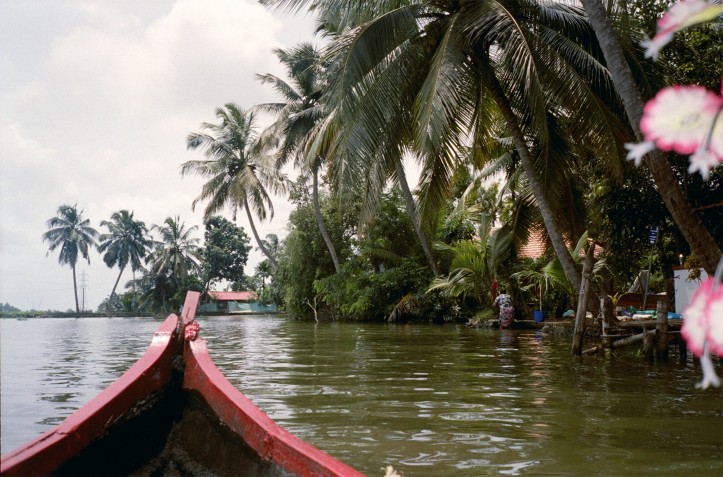
On the next day, I read in The Times of India that during the last 24 hours, Mumbai beaches were covered with over 300 tons of trash brought here by the ocean from as far as the eastern shores of Africa.
On the opposite side of the artificial peninsula that is southern Mumbai, the waves are even angrier. In Worli Bay, they crash on a stone road that goes 500 metres into the sea, leading to the tomb of Haji Ali, a wealthy Muslim businessman. In the first half of the 15th century, he gave away all of his possessions, went on hajj, and became a mystic. There should be a queue of worshippers to his tomb. They would walk slowly, cordoned by beggars asking for money, clinking with their tin bowls and calling Allah. It’s a curious spectacle that combines lamentation, humility and celebration. There would be qawwali music by the entrance to the marble tomb, its solemn and passionate tones carried in the air. Today, however, there is nothing here but the foreboding roar of destruction. A grey, leaden mass is crawling toward the city. The sea already knows. Its turbulence is a warning.
The police have closed the passage toward the tomb. It’s now hardly visible behind the sheets of rain, churning sea, and the low wall of clouds. Its bright dome and slender minarets look like the sails of a ship battered by furious winds. And although the tomb lies on a stone islet, it seems to rock on the waves.
I’m standing by a wall near the waterfront, wrestling with the wind for my umbrella. There’s only one hole in the wall, and it’s taken by a clever mutt. Its muzzle is mauled with years of street life. The dog is fast asleep, curled in a tight ball, oblivious to the roar and chaos that rage around it. Mumbai has gone dark; all its skyscrapers have disappeared in the storm, even the most expensive house in the world that belongs to Mukesh Ambani, recently pronounced the richest man in Asia. People are running around in panic. They crowd by the underground entrances, hide under vendor booths, lose their chappals in deep puddles, chase cabs and buses.
Only the game matters!
But not them. They are invincible in the rain. Let it rain harder, then they’ll show the monsoon what they’re really made of! They already took off their T-shirts a long time ago, kicked their chappals off and left them on the asphalt. Their shorts cling to their buttocks, so heavy with rain they begin to slide down. Who cares? Staying dry is not important. Only the game matters!
On Sunday afternoons, cities belong to the young cricket players. A few planks, a plastic ball, and a car-free side street is all they need. The gutters are gurgling, the streets are bombarded with raindrops the size of lychee fruit, but the ball shoots through the rain just the same, flying high, hit hard to spite the rain. Two pairs of bare feet are already racing toward it – the ball has lowered its axis and falls somewhere near the wet vendor carts. The smaller one catches it and throws it to his mates while the opponents run to their base with a scream. It’s hard to tell who’s winning because after every shot all the boys gather in a thick bunch and start debating. As if they weren’t playing against each other, but against some conventional opponent to have more fun together. There’s more agreeing and compromise in this game than there is rivalry.
Not far from here, at Crawford Market and in narrow streets around the old mosque, Sunday trade is on. Every few minutes, the vendors need to spread and fold plastic sheets protecting their goods: fruit, flowers, clothes and crockery. Still, there are plenty of customers everywhere. Life goes on, rain or no rain.
The downpour increases and the boys show off their defiance. They start doing wet push-ups, cartwheels, and backflips. “You can’t hurt us!”, they claim with their slender brown limbs and stuck-out bellies. They dance just like their idols in Bollywood hits: opening their chests, spreading their arms wide to the sides and lifting them up, moving their hips. Monsoon is a cultural code; even the children know it’s the time of joy, the time of love.
Business as usual
The rain season is when love happens; these months are made for romance. Indian songs and poetry are permeated with the trope of lovers parted by heavy rains, consumed by wistful longing for each other. They seek relief in poems that promise the sun will return and so they will be reunited. Tender refrains and verses, once written down in letters, are still alive on the lips of rickshaw drivers who watch girls hiding under their umbrellas. They sing love songs to the girls. In the rain, women are goddesses – the water makes them seem more sensual and curvaceous than usual.
There is not a single Indian music hit without a ‘wet sari’ scene in which the main character – the female energy embodied – appears soaked with warm monsoon rain, her wet clothing clinging tightly to her body, revealing more than it’s meant to cover. The men jump out of their chairs, clapping, cheering and whistling. Women cover their mouths with handkerchiefs to hide small smiles.
Monsoon is a juicy season. That’s when the ripe, creamy mangoes appear in fruit stalls. It’s the maharaja of all fruit. The mango has many shapes, bringing to mind female breasts and bottoms. Its colours are as seductive as its curves; they come in greens and yellows, in hues of orange and red. Fresh mangoes are heaped at the stalls, washed with warm rain. The fruit yearns for the touch of tender hands that may carefully examine their softness and bring the smooth skin under the nose, before giving it to the vendor who will put the fruit on the scales. Wrapped in a newspaper full of damp announcements, the fruit will be carried home. The children will shriek with joy, hoping for some sweet frozen kulfi, and the mother-in-law will lick her lips, thinking of a tart and spicy marinade.
I’m standing in the rain by those heaps of voluptuous fruit, taken hostage by the sudden downpour. The vendor couldn’t miss such an opportunity – he quickly pulls me between the wooden shelves. His sons have covered delicate plums and lychees, letting the rest of the fruit get wet in the rain. Guavas and papayas, Kashmir apples and green pears, oval watermelons and piles of small golden mangoes. Heavy raindrops drip from clusters of small bananas hanging from the ropes strung under the ceilings. Here, in the back, fragrant incense is burning slowly next to a candle and a jasmine garland. In this corner, the gods are constantly worshipped to secure divine favour. The boys squeezed in with us and are now wiping their faces, wet from the rain. We laugh together. The rain is fun – it’s a test to prove one’s reflexes and resourcefulness. There are so many hiding places, but who’s going to reach them first?
We stare at the crossroads. The thick tangle of auto rickshaws, motorbikes, motor scooters and buses has disappeared like a fleeting dream. Everyone ran for cover, like those giant orange ants that always know first when it’s time to hide from the flood. Nobody’s honking, nothing is coming down the road. Everyone backed off, giving the spotlight to the rain. Let it show what it can do.
After a while, the streams of rain start to thin. Once we can see individual raindrops rather than uniform sheets of water, we know it’s letting go. The fruit vendor loudly coughs up some phlegm and spits on the ground. Then he yanks the plastic sheet covering the fruit and asks me what I wanted to buy. He doesn’t speak, just raises his chin questioningly. I nod my head, and he already knows – I’ve been here many times before. He picks up a plump fruit, tosses it in the air, catches it, weighs it in his hand.
“You love my mangoes, madam!”, he smiles. “Sixty rupees!”
I walk back to my little room with a view to the Goa jungle. My teeth slide into the soft flesh. I listen to the downpour. The hum of rain changes with the wind. A sudden gust hits a palm tree. Its leaves slap the neighbouring trees. I look through the window. Wide banana leaves gather the water and let it slide down in batches; a sudden apocalypse for ants, beetles and cockroaches. Only the guava tree stands unmoved. The storm pulls and tugs at it, but the fruits are unripe and hard as stones, clinging bravely to the branches. They won’t fall until their time comes. And when it does, their hypnotizing fragrance of mild fermentation will permeate the air.
In a few moments, it will get completely dark. The dusk will be hastened by rain clouds, rolling in heavily in a thick leaden mass. Yet I’m confident that right now, in these last moments of daylight and dying rain, tangled foliage suddenly flares with brilliant colour. I can see the shine of banana leaves, the lime-green of mango trees and bright yellow spots on tree trunks. Seconds later, the thick black night swallows everything.
The last drops of rain splash onto the rocky ground. Everything falls silent. The air stands still. That’s when the mosquitoes arrive.


